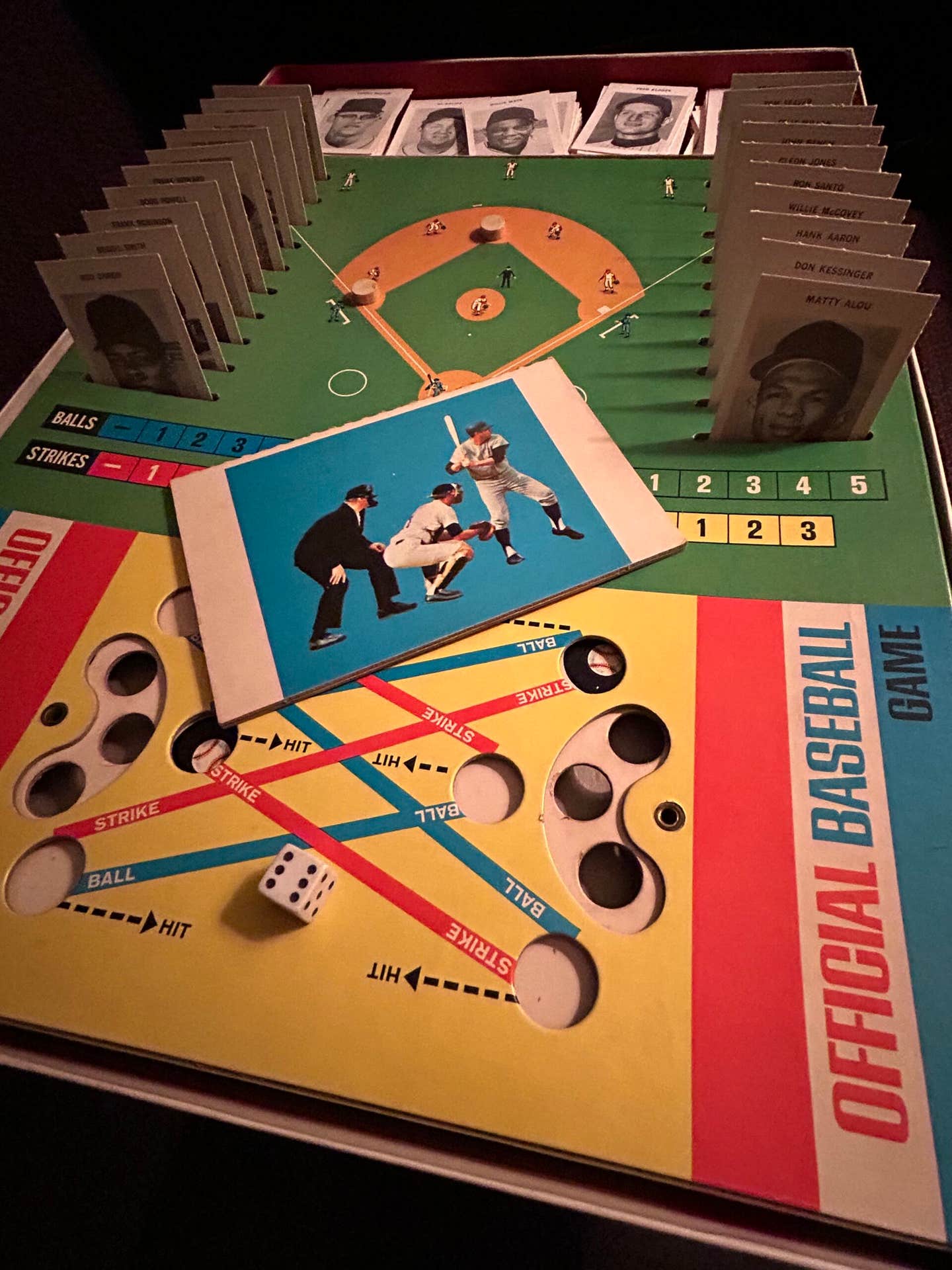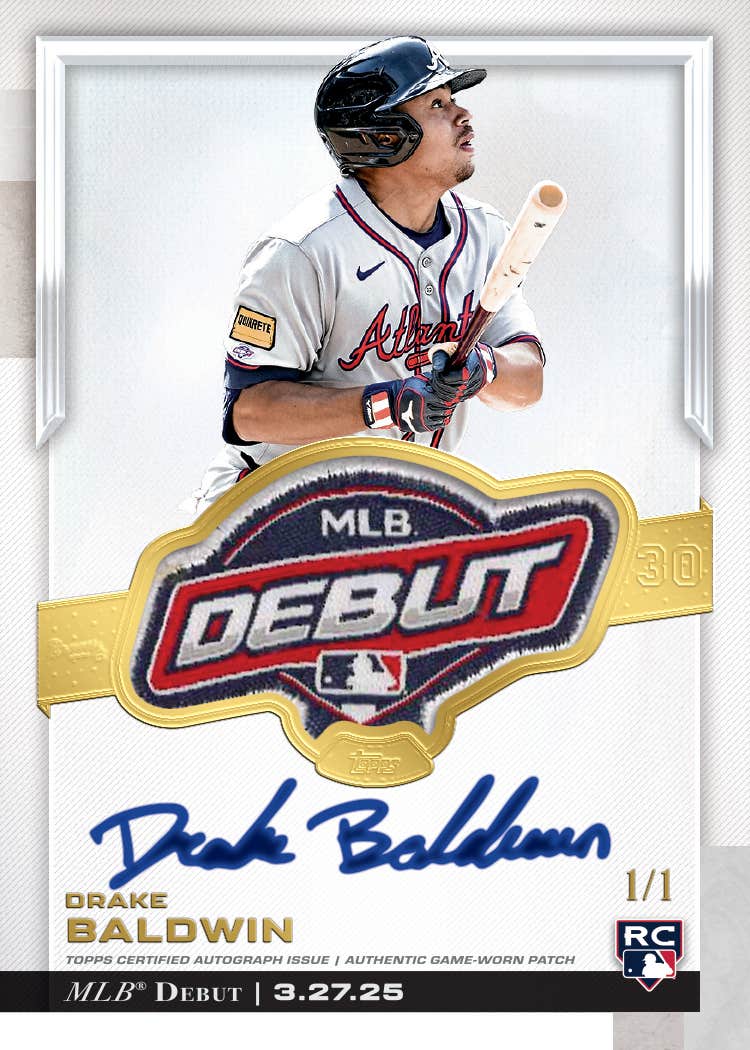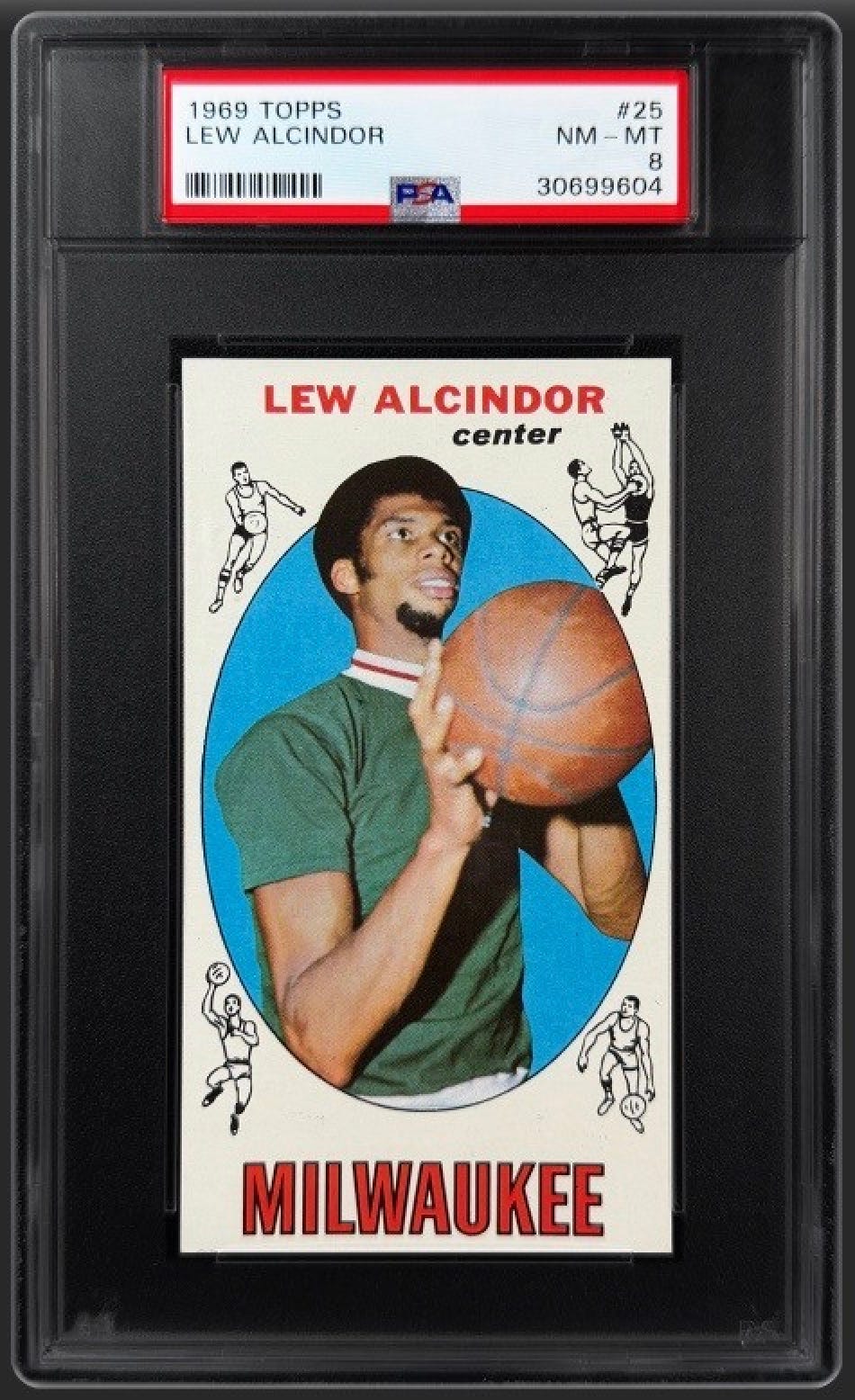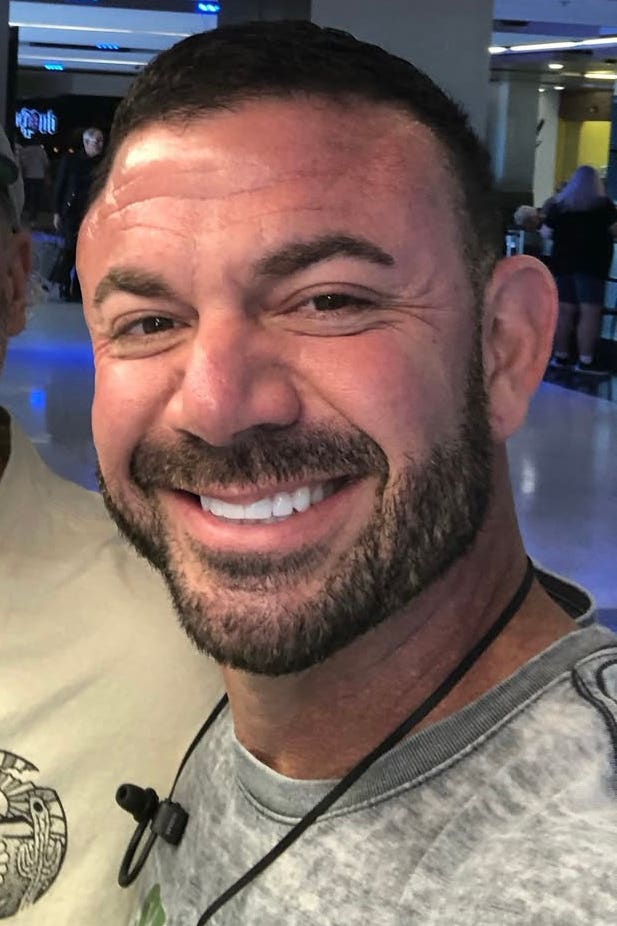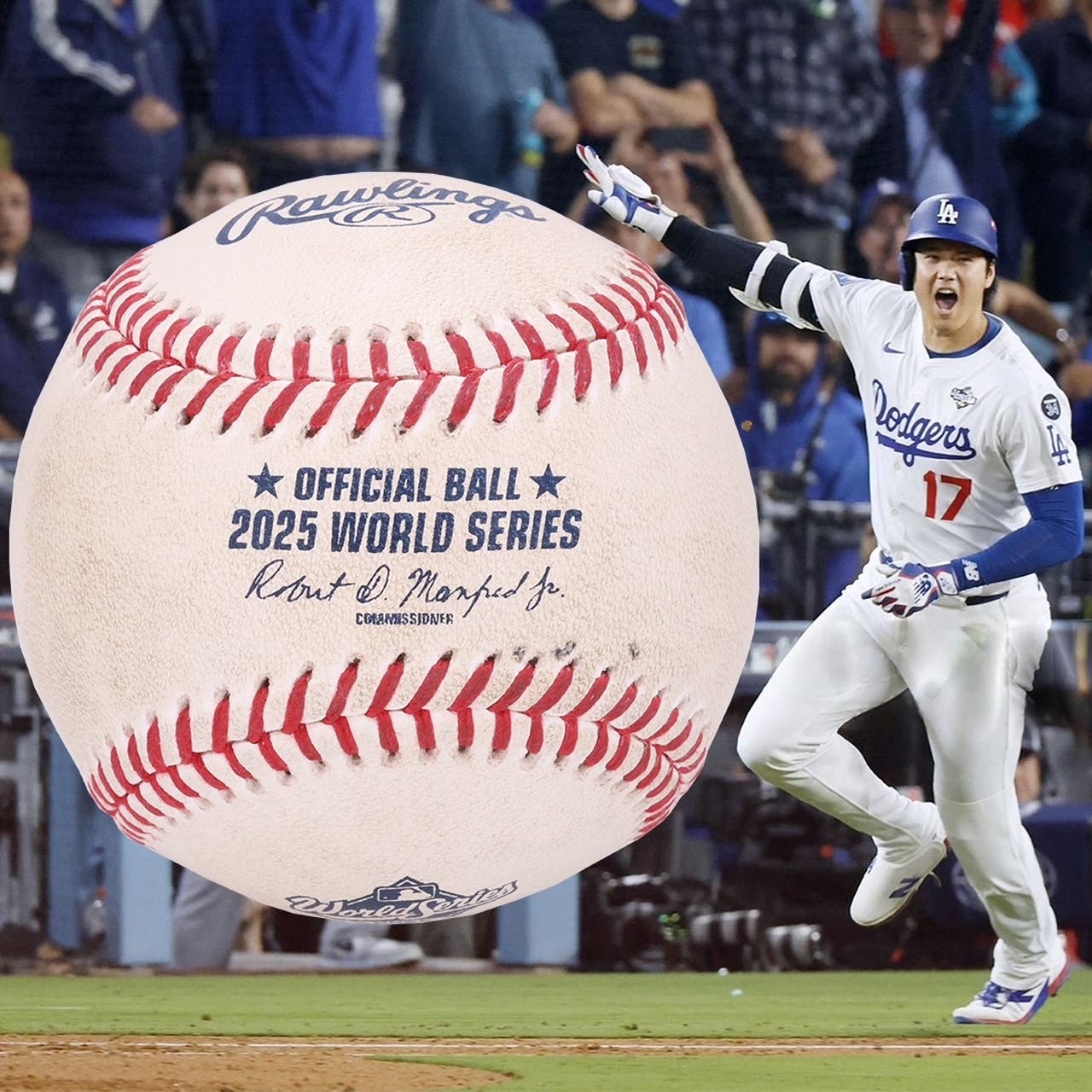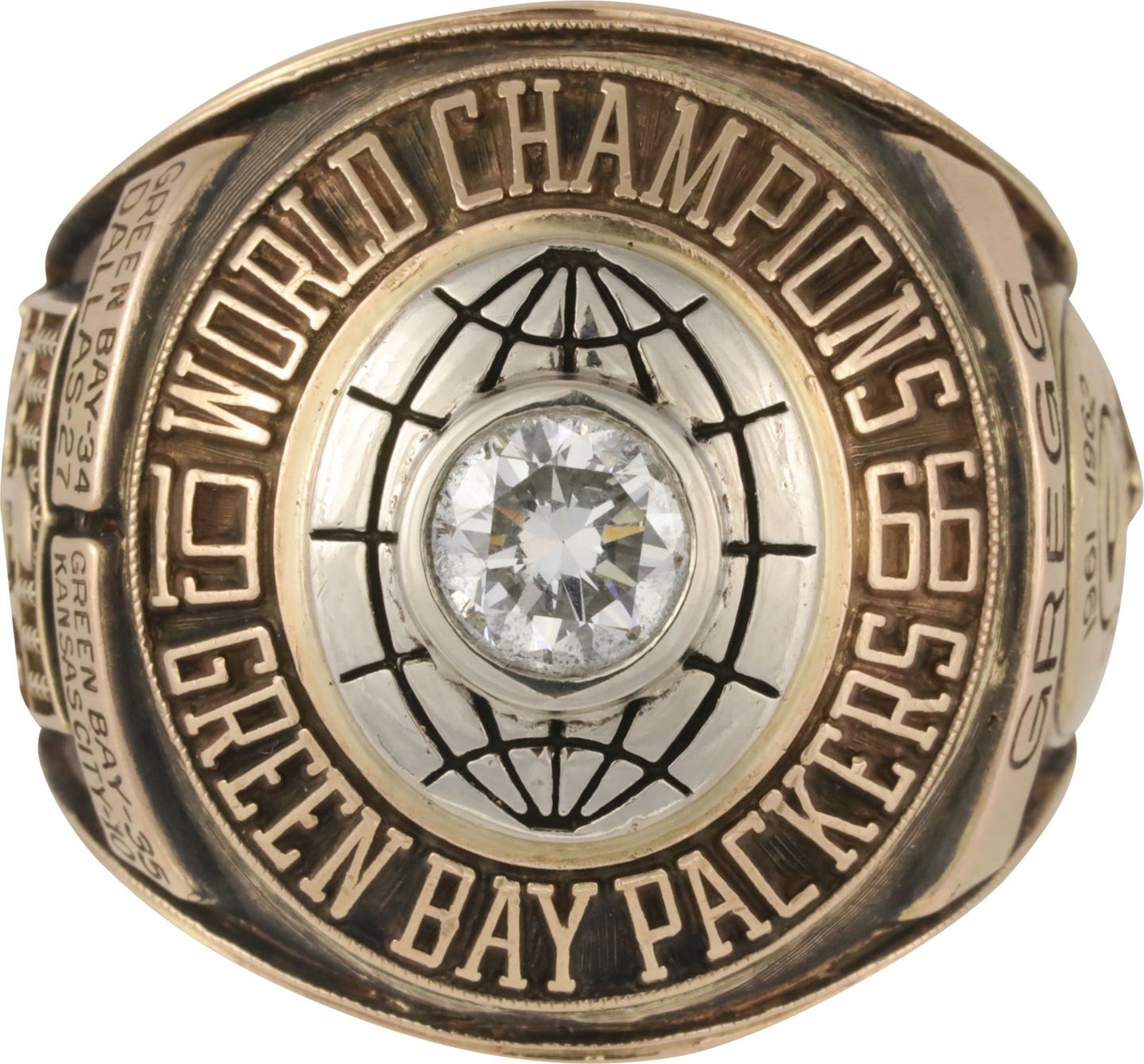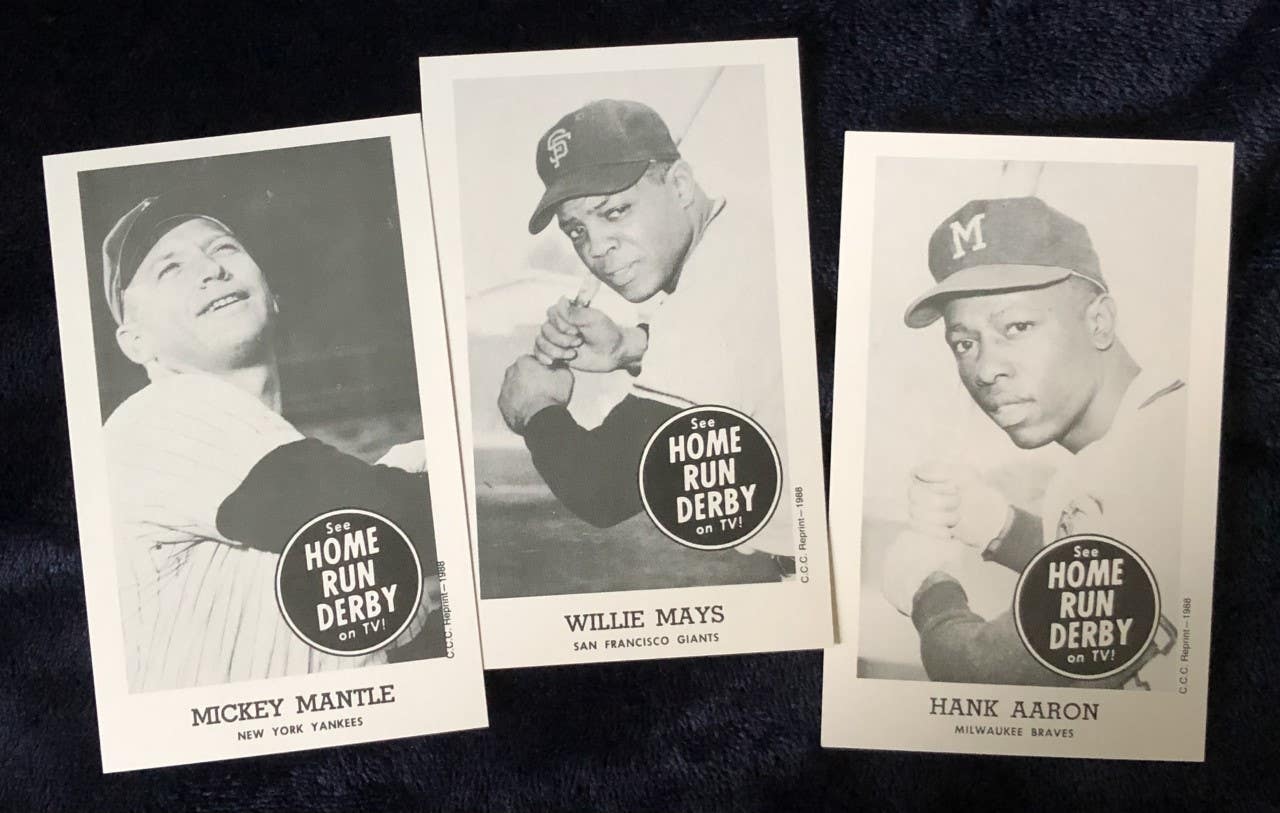
News
Remembering the 1959 MLB Home Run Derby, the classic TV show and the baseball cards they produced
The Los Angeles Dodgers will host the MLB All-Star game on July 19 and many batters will look to launch a home run or two at Dodger Stadium in hopes of helping their team win the Mid-Summer Classic.
Several all-star batters will take similar swings on Monday during the fan-favorite Home Run Derby, an All-Star Game staple since 1985.
This year marks the third time the Dodgers have hosted the event, along with 1959 and 1980. From 1959-1962 Major League Baseball played two All-Star games each summer and in 1959 the second game took place at Los Angeles Memorial Coliseum (Dodger Stadium did not open until 1962).
While there was no Home Run Derby prior to the All-Star Game in 1959, several MLB stars participated that December in a television show, filmed at LA’s Wrigley Field, called “Home Run Derby.” Some attribute the TV show to inspiring, at least in part, the creation of the Home Run Derby as part of the All-Star Game.
Each of the show’s episodes matched two of the era’s top sluggers who alternately hit for “nine innings” to see how many dingers they could blast. “Outs” consisted of any pitch not hit for a homer or any called strike — three “outs” to an inning.
The half-hour program, counting commercial breaks, took place with a bare-bones level of TV and baseball personnel and no crowd in a Pacific Coast League stadium, which was later the home for the inaugural season of the expansion 1961 Los Angeles Angels. Calm and congenial TV announcer Mark Scott hosted “Home Run Derby.”
When one slugger took their whacks, Scott and the other hitter sat a short distance away and mainly chatted about the competition. Depending on the source, the episodes started airing in syndication either in January or April of 1960, with the first of the 26 programs presenting power hitting royalty: Mickey Mantle and Willie Mays.
Episode winners took home $2,000, with bonuses for three or more straight homers in an inning. Hank Aaron won six of seven contests and the most money, $13,500 (or around $132,000 in 2022). You can still watch episodes on YouTube, iTunes or DVD.
The American Motors Corporation sponsored the show and distributed a 20-card Home Run Derby trading card set featuring all of the program’s hitters. The issue presumably found its way to collectors through prospective vehicle buyers (and their families, with kids likely along for the “car-buying ride”) at AMC dealerships.
“That is a great, great set,” said sports card dealer Steve Novella. “I would love to get my hands on them as often as possible, but it’s been years since I had some.” The Florida-based dealer noted that Home Run Derby cards “got hotter when the show was on ESPN,” which revived the episodes in the 1980s.
HALL OF FAME HOMERS
For the longest time, nine cards in the rare black-and-white issue displayed Hall of Famers. But with Gil Hodges entering Cooperstown this summer, the former first baseman and slugger (mainly for the Brooklyn Dodgers) and manager (Washington Senators and New York Mets) ratchets that total to 10.
Hodges and Dodgers teammate Duke Snider experienced limited success on the TV show, but they did contribute to a World Series title over the Chicago White Sox in 1959. In fact, Hodges smashed a game-winning homer in front of some 92,000 fans in Game 4 of the 1959 Fall Classic, one of the largest single-game crowds in big-league history.
PSA Population figures on the unnumbered postcard-sized collection show around 600 cards. The highest grades currently listed are PSA 8 (NM-MT), with only eight of those reported. Mantle, the set’s key player, appears the most in the Pop Report (43), and even mid-grade slabbed versions can bring $15,000 to $20,000.
Meanwhile, only three cards in the blank-back offering fall below the 24 PSA Pop number: Rocky Colavito and Gus Triandos (23) and host Mark Scott (19).
The PSA Pop info covers some of the broad strokes on this collection’s canvass and Louis Bollman of California auction house Memory Lane Inc. notes: “I think a lot of the nicer ones came from a ‘find’ in the mid-1990s.” Bollman added that the cards “have a perfect design. When nice, they are so clean looking, but they are insanely condition sensitive.”
Bollman emphasized that, of course, “any of the Hall of Famers are highly sought after,” but he singled out the image of Cubs legend Ernie Banks as “a great looking card.”
1959 OR 1960?
Normally listed as a 1959 set, it really should be labeled a 1960 collection. The copyright year on the episodes reads 1960, and the cards debuted during that season.
A good example is Cleveland slugger Rocky Colavito, the 1959 co-American League home run champion. Stunningly, especially for his feverish local fan base, Cleveland shipped “The Rock” to the Tigers right before the 1960 regular season. Indians home attendance immediately nosedived as a result — and for several seasons. Talk about the mistake on the lake.
Colavito’s Home Run Derby card shows him in a Cleveland uniform but just below his name it reads “Detroit Tigers,” solidifying it even more as a 1960 set. Yet, all that info aside, after so many decades it likely will continue to be known as a 1959 offering.
Whatever year you want to call this collection, both Novella and Bollman, like several of the blasts seen throughout the show, see a long and impressive trajectory for this issue’s future.
Reprints of the set came out in 1988 and that gives collectors a solid option to check out.
Other than the regular cards and reprints, however, there is not a lot memorabilia that exists revolving around the program. Perhaps the most common item of the era to supplement one’s “Derby Display” shows up in the April 9, 1960 issue of TV Guide — a program ad picturing Mantle and Mays. eBay routinely lists samples of this particular issue for $12-$20.
On the opposite end of the Home Run Derby spectrum are three current (as of press time) eBay listings of PSA-slabbed photos, likely publicity shots. All include Mantle, two of him in the batter’s box and one standing alongside host Scott.
These 4-by-5 photos, clear as upper deck homers, have a listing price of at least $5,000 (OBO). The online seller, with an eBay name of Manontherock, said, “the photos originated from a newspaper archive in a subfolder for TV shows.” The Washington state-based resident said the archive “did not contain the original negatives.”
HOME RUN LEGACY
The syndicated program completed its broadcast run in July 1960. Sadly, within two weeks after that milestone, Scott suffered a fatal heart attack at age 45. Scott’s passing ended plans for more seasons of the show.
A lone season. Footage solely in black-and-white. A no-frills production approach. While some frown about those and other Home Run Derby elements, it appears many more celebrate them.
The legacy of this “colorful” show, and its card set, will continue resonating for decades, a perennial vote of sorts on one’s All-Star ballot.
ANOTHER SWING AT THE DERBY
If the original cards are too much for your budget, or if you want to cherry pick and/or have some fillers until you acquire the real ones, consider the 1988 Home Run Derby reprints put out by the Card Collectors Company.
A couple other nice things with the reprints: the cards are solid reproductions; and near the bottom right-hand corner of the photo they are clearly marked: C.C.C Reprint — 1988.
The one downside to the reprint issue for some collectors: it excludes host Mark Scott.
Here are some recent auction prices realized, rounded to the nearest dollar, for some 1959 Home Run Derby cards (prices exclude shipping and sales tax).
GRADED
— Harmon Killebrew (PSA 7): $11,000
Ken Boyer (PSA 6): $1,081
Willie Mays (PSA 2): $500
Eddie Mathews (SGC Certified signature): $4
RAW
Bob Allison (Poor): $125
1988 CCC REPRINTS
Raw (all cards NM-Mint)
Complete set: $10-$35
Mickey Mantle: $10
Rocky Colavito, Al Kaline, Mays: $4 each
— Doug Koztoski is a frequent SCD contributor. He can be reached at dkoz3000@gmail.com
You Also Might Like: Historic Muhammad Ali collection up for bid at Heritage



